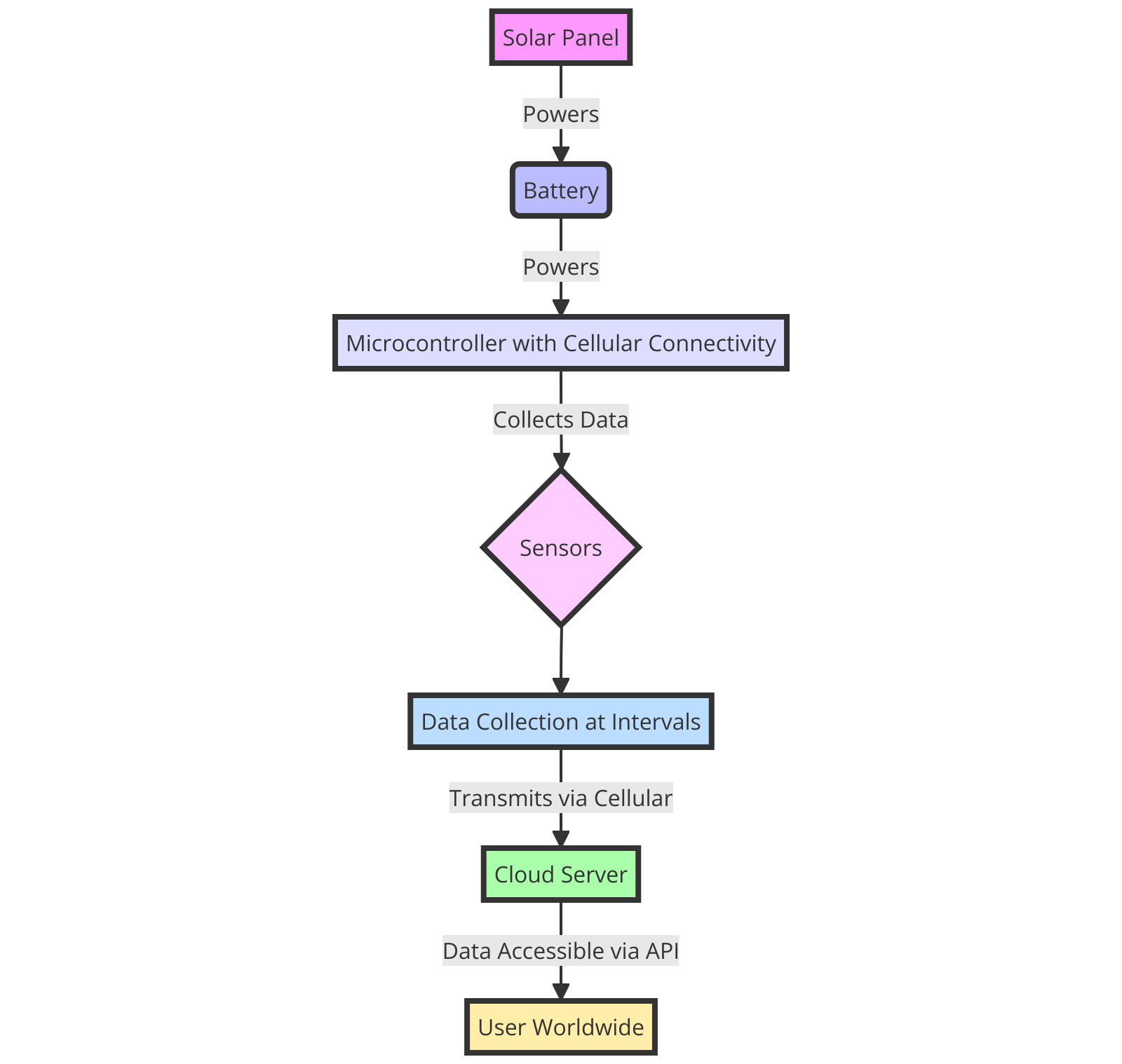In today's rapidly evolving digital landscape, the need for innovative, accessible technology has never been more apparent. Recognizing this, I embarked on a journey to create a project that not only pushes the boundaries of IoT (Internet of Things) but also remains within reach of beginners. The result is a solar-powered, cellular-connected microcontroller designed to democratize remote access technology. This project is not just a gadget; it's a gateway to endless possibilities, crafted with simplicity, scalability, and ease of production at its core.
Inspiration Behind the Project
The idea was born out of a simple observation: there are countless locations across the globe where traditional power sources and connectivity options are limited or non-existent. Yet, the potential for data collection and remote monitoring in these areas is immense. From agricultural fields to remote research stations, the applications are limitless. However, the complexity and cost of existing solutions often put them out of reach for hobbyists, small businesses, and educational institutions. This gap in accessibility sparked a vision: to create a low-cost, easy-to-use device that could bring remote monitoring capabilities to the masses.
Design Philosophy and User Experience
At the heart of this project lies a commitment to user-friendliness and modularity. The device is built around a microcontroller with cellular connectivity, empowered by a solar panel coupled with a battery. This setup ensures that it can operate indefinitely without human intervention, harnessing the sun's power to stay connected. The modular design means that users can easily customize or scale the system based on their specific needs, adding sensors or expanding the network without diving deep into complex programming or electrical engineering.
How It Works
The core functionality of the device is straightforward yet powerful. It collects data from its environment at predetermined intervals—be it temperature, humidity, soil moisture, or any other sensor data. This data is then transmitted via cellular network to a cloud server, where it is stored and made accessible. Users can retrieve this data from anywhere in the world through a simple API request, allowing for real-time monitoring and analysis.
To ensure that the project remains beginner-friendly, I have focused on creating comprehensive, step-by-step guides and tutorials. These resources cover everything from assembling the device to configuring the cloud server and making API requests. The goal is to lower the entry barrier for IoT projects, making it possible for anyone with a basic understanding of technology to build and deploy their remote monitoring solution.
Why This Project Matters
In an era where data is king, the ability to gather and analyze information from any location is invaluable. This project opens up a world of opportunities for data-driven decision-making in areas previously hindered by the lack of connectivity and power. Whether it's optimizing agricultural practices, conducting environmental research, or simply exploring the potentials of IoT, this device empowers users to unlock insights that were once out of reach.
Moreover, by focusing on accessibility and ease of use, this project aims to inspire a new generation of innovators. It's not just about building a gadget; it's about lowering the barriers to entry for IoT development, encouraging experimentation, and fostering a community of creators who are equipped to tackle the challenges of the future.
In conclusion, the "Sun-Linked IoT" project is more than just a piece of technology; it's a testament to the power of innovation, accessibility, and the endless possibilities that emerge when we connect the world in new and exciting ways.

















Comments
Please log in or sign up to comment.